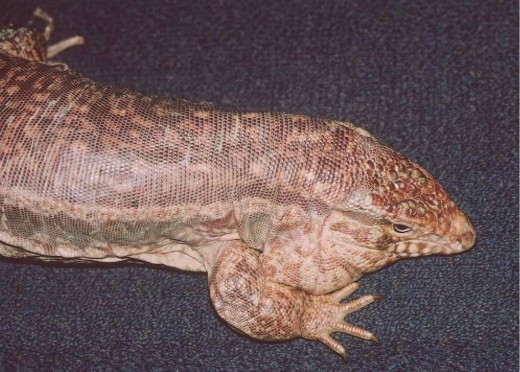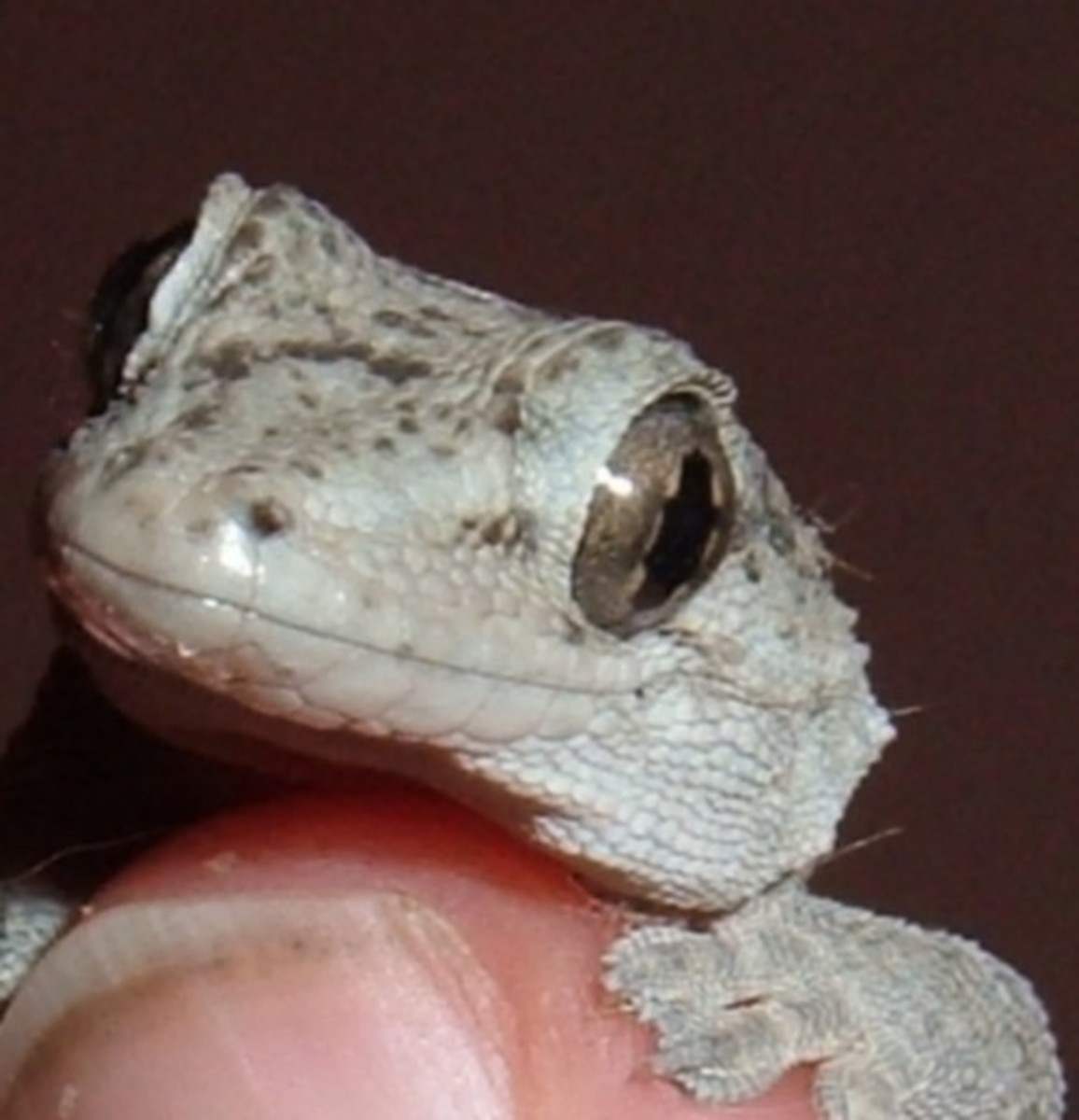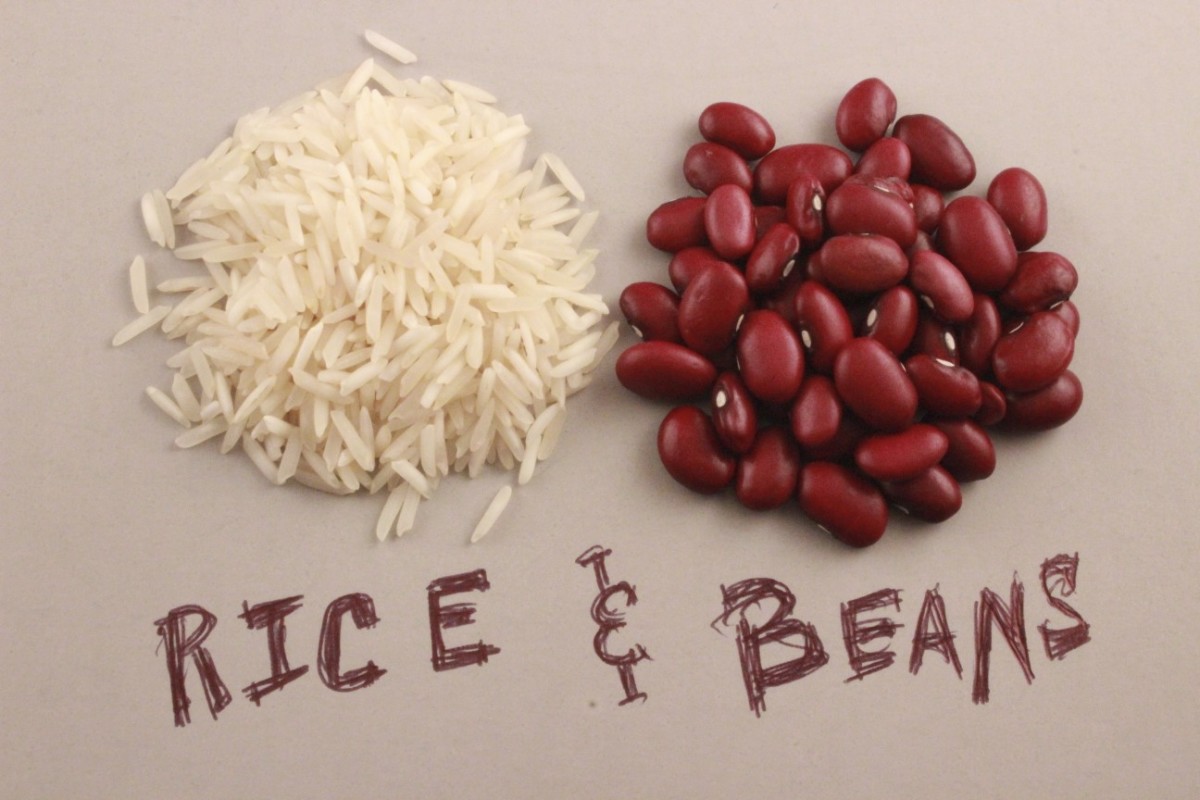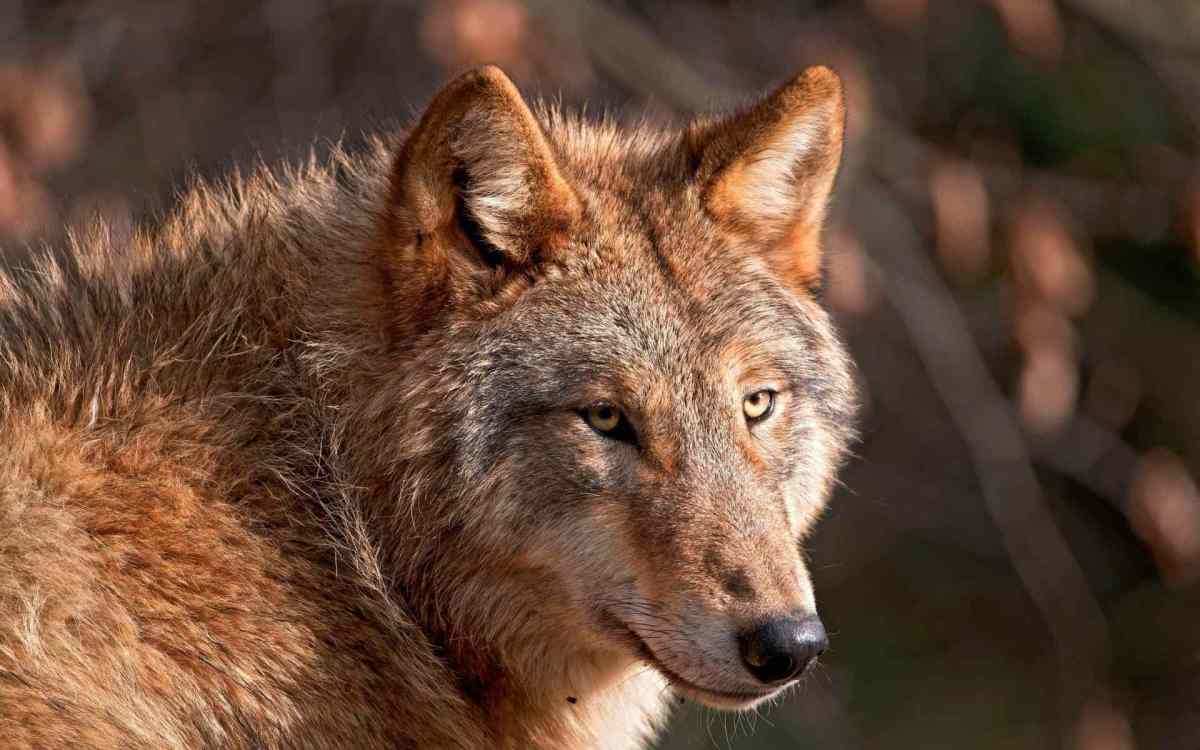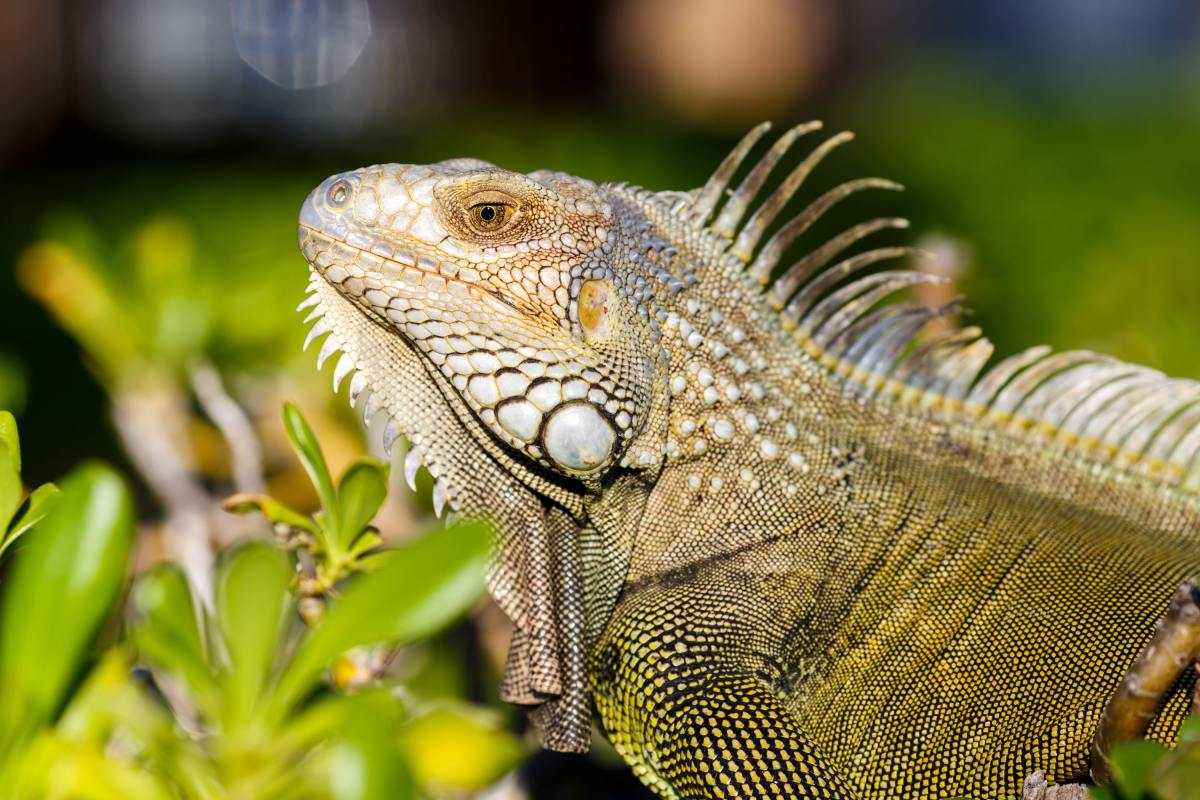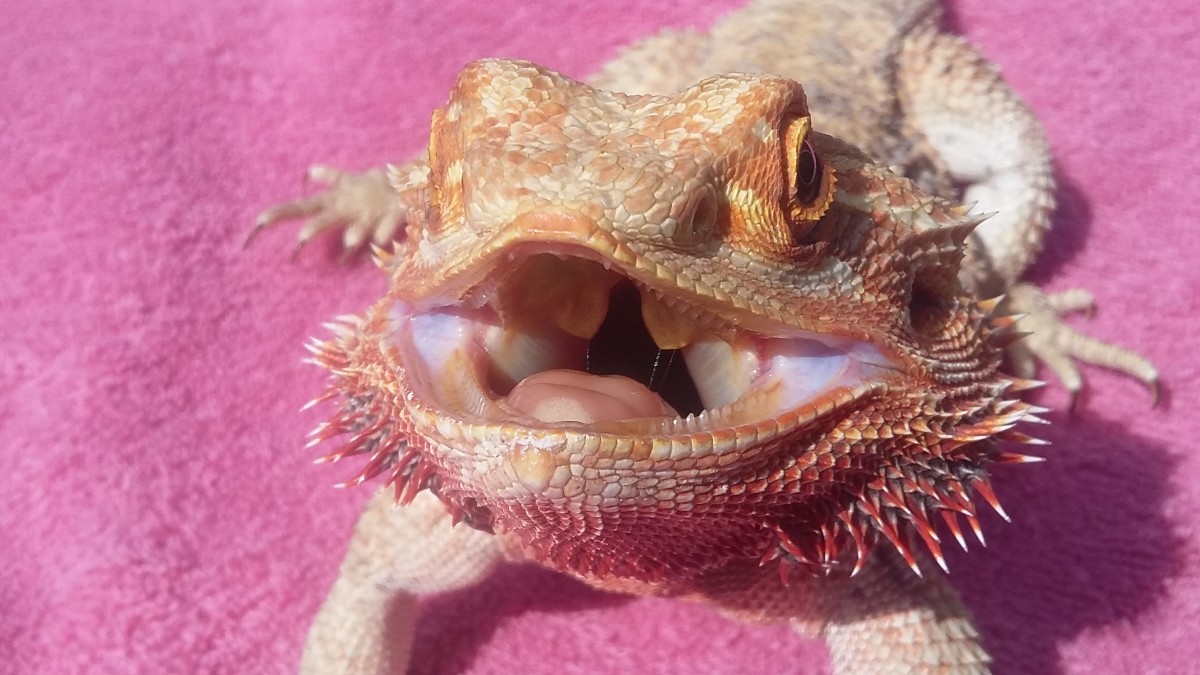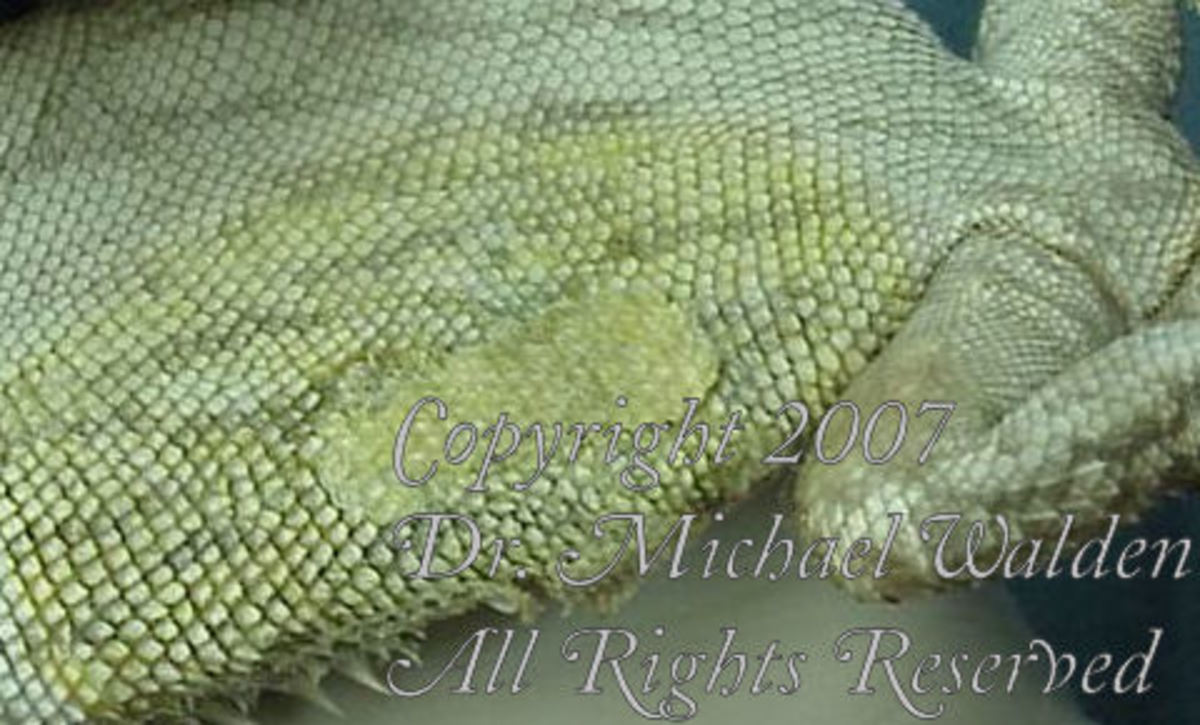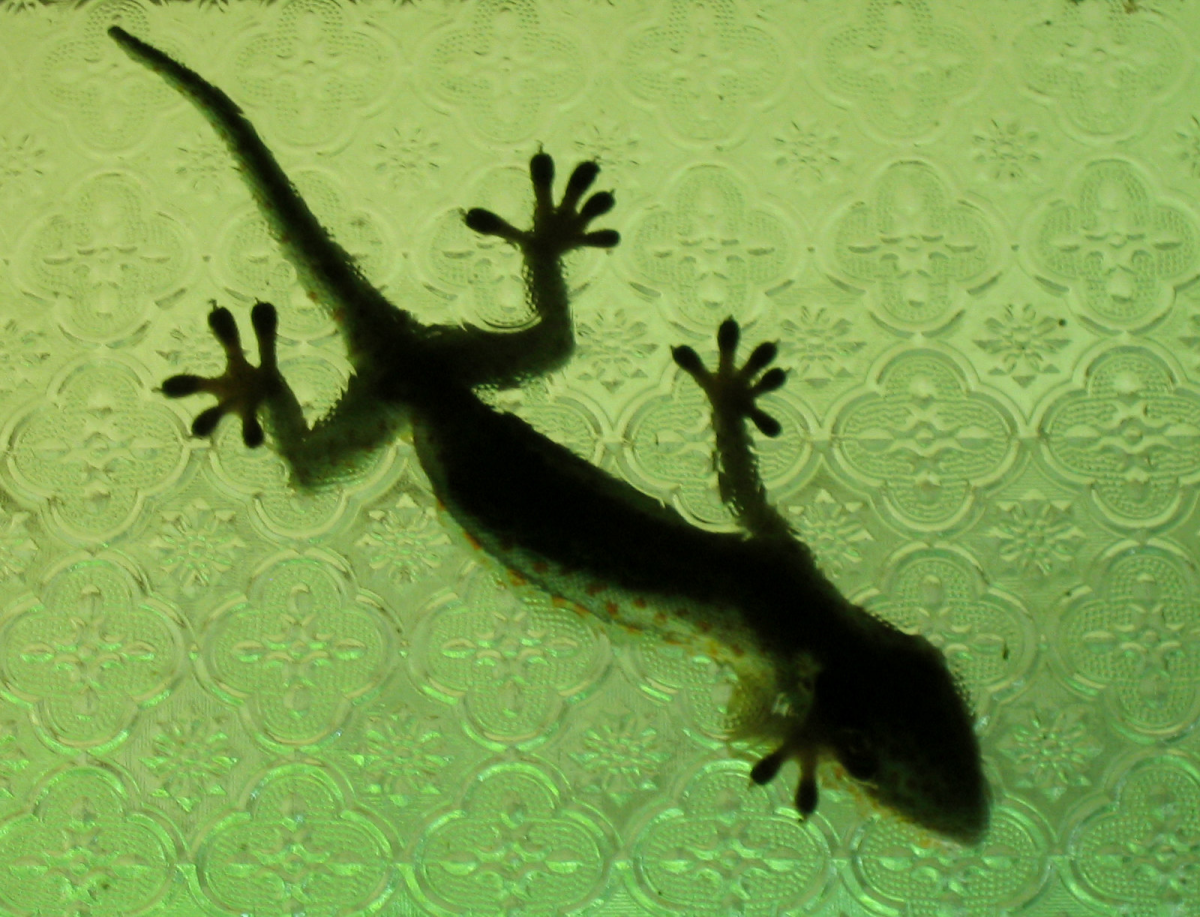Notes on the Red Tegu
Notes on the Red Tegu,
Tupinambis rufescens (Günther, 1871)
By Robert George Sprackland, Ph.D.
Shakespeare famously penned the opinion that "a rose by any other name would smell as sweet." Yet, being human, we still put a lot of stock in names and how we react to objects. Would we, I wonder, be so fond of roses if they were named, say, stink-balls or knife-plants? In examining one of the remarkable giant lizards that inhabit South America we encounter a creature whose names can be quite confusing, the red tegu. Or gold tegu. It all depends on which colour variety you happen to be examining!
A member of the strictly American lizard family Teiidae, extending from the United States to central Argentina, most of the species are known as tegus. A few species of tegu have become fairly popular in the pet trade, including the red (or gold) tegu. However, this colourful animal is considerably less commonly available. It is one of many of those peculiar species that come in more than one colour or pattern. If the animals turn coral to blood red on maturity, we call them red tegus, while if they become golden-yellow, we call them gold tegus. I'll just call them red tegus from this point, because their trivial scientific name (rufescens) is Latin, meaning "reddish."
This is a giant lizard that can easily grow to a length of four feet, and may weigh over eight pounds. Their jaws are particularly strong, powered by massive muscles and strong stout teeth. Their prey, which includes almost any smaller animals, eggs, and some fruits, is easily seized and overpowered once in the tegu's jaws.In South America, some red tegus find good hunting around -- and in -- farms, which naturally attract vermin. But they are also home to such easy pickings as chickens, chicks, and eggs, making them the local equivalent of North America's foxes, and about as unwelcome by local farmers. One difference of note, though; when Argentine farmers kill a tegu, they tend to send it to the cooking pot. Big surprise, tegu meat reportedly tastes like chicken!
Male teguss grow broader heads and distinct jowl-like cheeks that distinguish them from females. The tongue is long and forked, and head scales are large, distinct, and glossy.
Red tegus are the southernmost giant lizards of the New World, their range extending into more seasonal regions (with colder winters) than the other tegus. They live in almost any type of habitat in Argentina, Paraguay, and southern Brazil.
Though often available from specialist lizard breeders, they are moderately expensive. Some specimens become quite placid and can be easily and safely handled, but others have aggressive temperaments and will claw, lash, or try to bite. The bite from a medium tegu is quite painful; that from an adult can be dangerous. Either will most likely require stitches. Because of their potential bite, high cost, need for extremely large quarters and very specific care requirements, red tegus are not for novice or intermediate reptile keepers.
Dr. Sprackland is a herpetologist and author. His new book, GIANT LIZARDS 2nd edition, was released by TFH Publications in March 2009, and contains considerably more information and illustrations of tegus.
